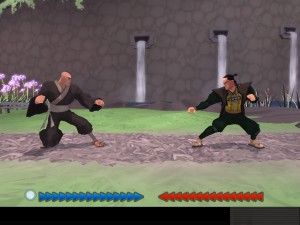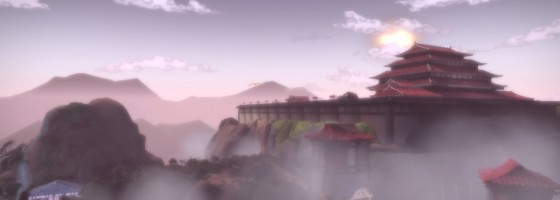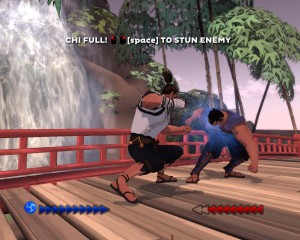Jordan Mechner has been making games since the 80s with the original Karateka and Prince of Persia. He is also strangely the only designer who would also work on modern remakes of his own works as the designer behind Sands of Time and of today’s game : the remake of Karateka.
Having not played the original I went into Karateka blind and found an interesting idea but sadly not much else.
Wax on, Wax Off:
Karateka was designed as a remake of the original game of the same name. A princess has been kidnapped by the evil warlord Akuma and is being held in his stronghold. Three suitors have come to her aid: Her true love, a monk and a giant brute.
When you begin the game, you’ll play as the true love and begin your ascent to the stronghold. Karateka’s gameplay was entirely QTE base. The game was a series of one-on-one fights between you and Akuma’s forces.
During combat you’ll hear musical beats that will clue you in on the number of attacks that were coming. From there you’ll have to time your presses of the dodge button to avoid all the hits and then counter the enemy. You could use either punch or kick attacks which plays into the trade off of doing more hits vs. stronger attacks.
After enough attacks you can perform a chi attack that stuns the enemy allowing you to attack them for an entire turn of combat. And that was actually it for the gameplay.
Boss fights were when the difficulty escalated, as the game did not give you any musical cues and instead you had to completely watch the enemy.
The problem I had was that the camera occasionally only viewed the combat from one side .
This made tracking attacking coming from the opposite side harder than it had to be. The difficulty became worse when the enemies began using long string of attacks as it was sometimes hard to track the hits.
The twist of Karateka’s story was what happened if the player died. If you died as the true love, you’ll then take control of the monk at the same part and if he dies then the brute. Each character was progressively stronger than the previous and played into mastering the game. To get the best ending you had to play the game all the way through as the true love.
Karateka was promoted as having a high replayability because of this system and while it was novel I have to disagree. You’ll still be fighting the same enemies and taking the same path (with a single play taking around 30 to 45 minutes.) Besides going for the best ending, the game had achievements but I didn’t feel compelled to go after them.
I liked the graphics style, as it had a very clean look but ultimately I came away wanting more. Jordan commented in interviews saying that he wanted the game to be easy to pick up which it definitely was. But I wanted to see more ways of how the QTE mechanics could be used.
For instance: Having a two on one fight, or different paths through or even just random chances of getting different scenes. The combat never evolved beyond just timing your dodges and the difficulty was uneven due to the speed of attacks and camera angle.

The different characters have different timing windows for avoiding damage along with varying amounts of health and attack strength.
The speed of attacks became a more pressing issue as you went further into the game, as it all but guaranteed the enemy getting a free hit on you during the first round of combat.
For instance you’ll hear three tones one right after another, but the enemy will actually go: attack, wait, attack, attack.
Another annoyance was how the game always forced you to go through the tutorial; I would have liked to have seen a way to have different patterns to make the game more challenging.
In the end, Karateka was an interesting idea of bringing back a classic game to modern audiences, but this epic journey felt more like a quick jog around the neighborhood.



